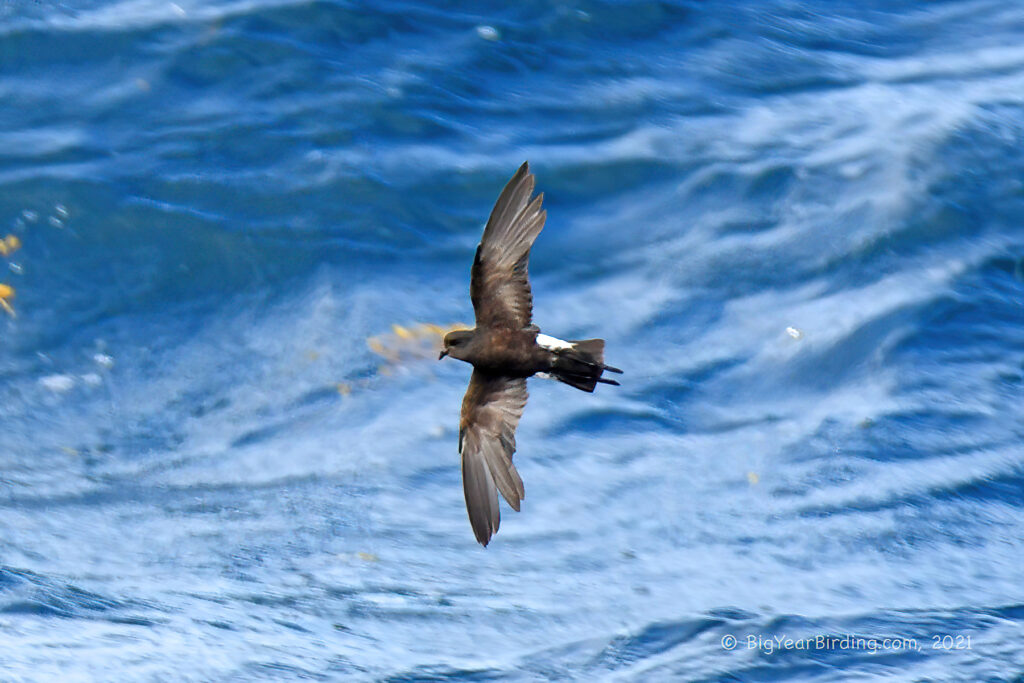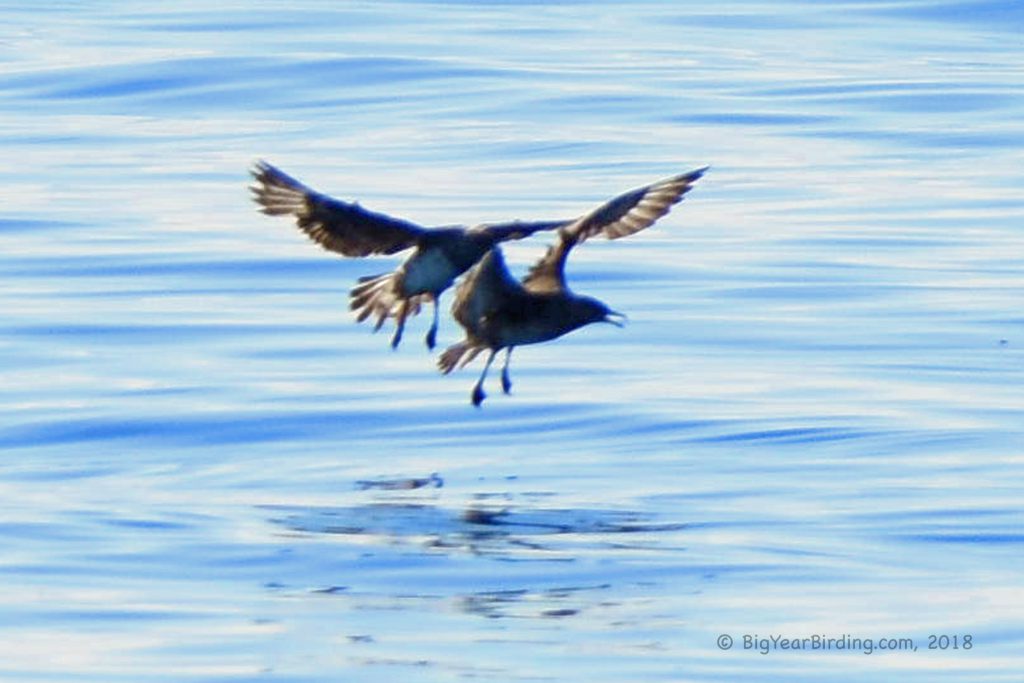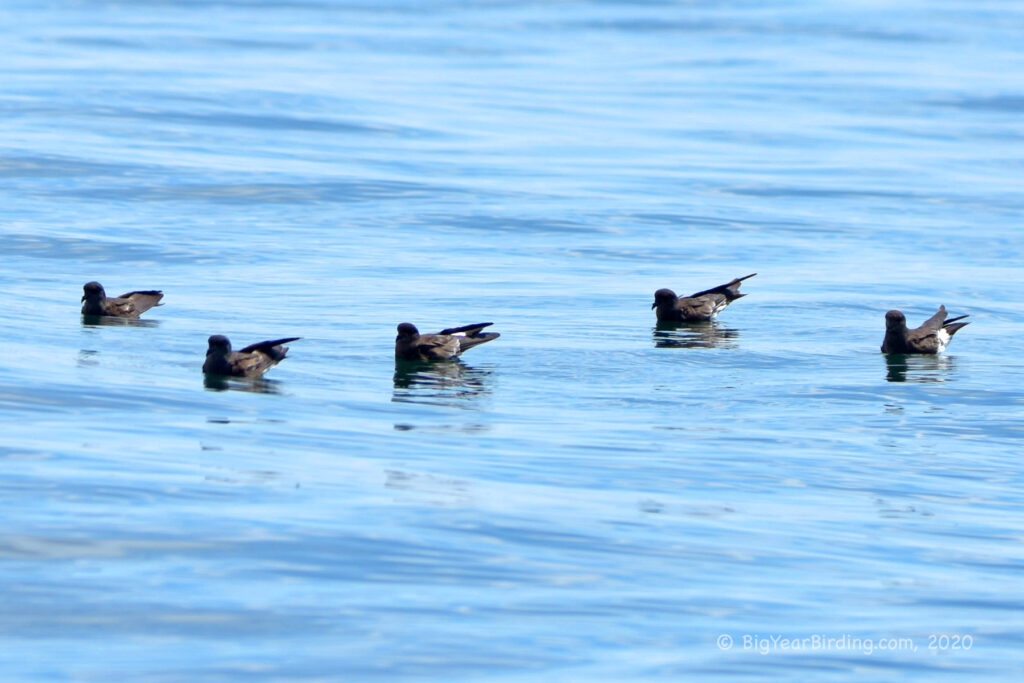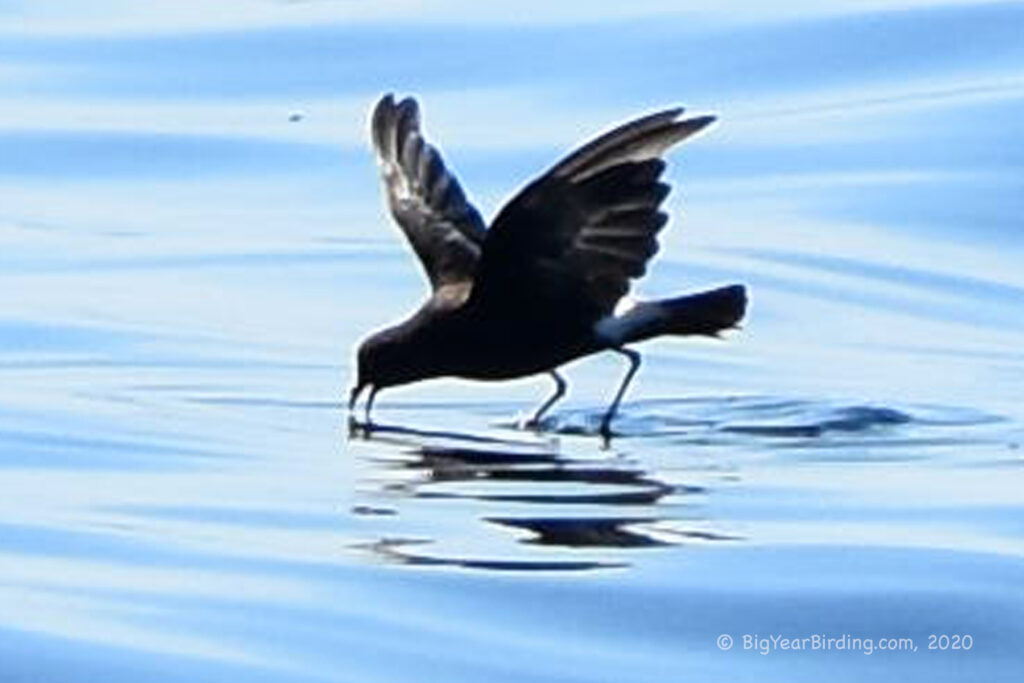
Wilson’s Storm Petrel is a small seabird, measuring only about 6.3-7.9 inches in length and weighing around 1.1-1.6 ounces. These birds have dark plumage, with a blackish-brown back and wings, white underparts, and a distinctive white rump patch. They have a forked tail and a relatively short, thick bill that is black in color. In flight, Wilson’s Storm Petrels are known for their fluttery, erratic wing beats and low, sweeping flights over the water.

One of the most distinguishing features of Wilson’s Storm Petrels is their habit of “foot-tapping.” These birds will hover over the water, tapping their feet on the surface in order to stir up small crustaceans and other prey items. They are also known for their ability to fly low over the waves, often following ships in order to feed on scraps thrown overboard.
Wilson’s Storm Petrels breed in the Southern Ocean, with colonies found on sub-Antarctic islands such as South Georgia, the Falkland Islands, and the South Sandwich Islands. During the non-breeding season, they migrate to the north, with some birds being found as far north as the coasts of Alaska and Maine. Some populations may even undertake trans-equatorial migrations, traveling as far as the Pacific Islands.

Despite their small size, Wilson’s Storm Petrels are incredibly hardy birds, capable of surviving in some of the most challenging environments on Earth. They are able to withstand the harsh winds and freezing temperatures of the Southern Ocean, and are known to breed in colonies of up to several million pairs. Despite this, their populations are threatened by habitat destruction, climate change, and pollution, and as such, they are considered a vulnerable species.

